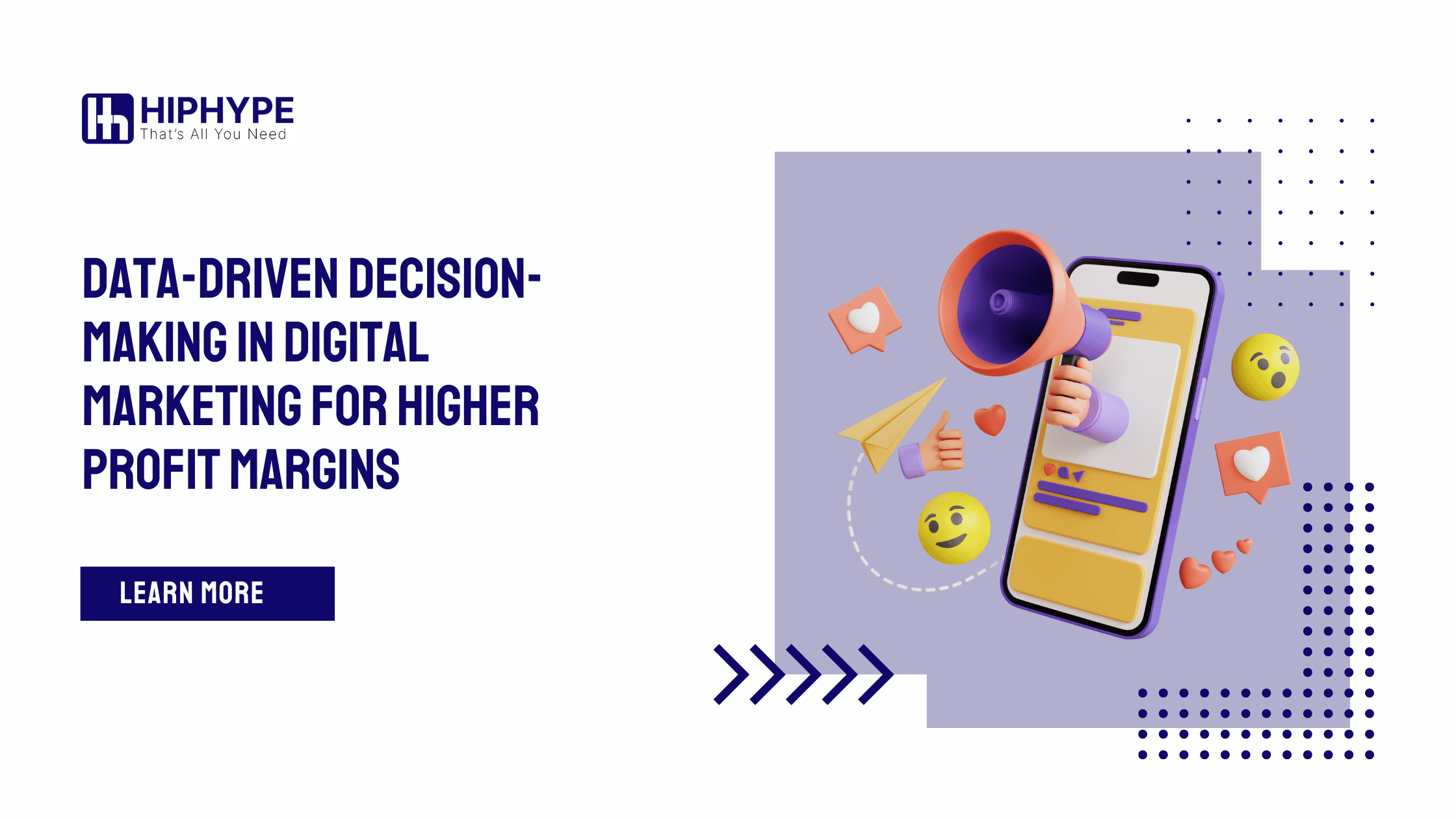Data-Driven Decision-Making in Digital Marketing for Higher Profit Margins
Learn how data-driven decision-making in digital marketing boosts ROI and profit margins through targeted strategies, analytics, and personalization.
In today’s competitive landscape, data-driven decision-making has emerged as a crucial factor for achieving higher profit margins in digital marketing. Brands can maximize returns, target audiences more effectively, and streamline budgets by making decisions based on robust data. This guide explores key strategies, tools, and examples to help you leverage data for better digital marketing outcomes.
Table of Contents
Introduction to Data-Driven Marketing
Why Data-Driven Decision-Making Matters
Essential Data Sources for Digital Marketing
Data Collection and Analysis Techniques
Targeting Audiences with Precision
Personalization for Enhanced Engagement
Optimizing Campaign Performance
Tools for Data-Driven Marketing
Common Challenges and Solutions
Conclusion
1. Introduction to Data-Driven Marketing
Data-driven marketing involves collecting, analyzing, and acting on insights from various data points to create optimized marketing campaigns. It aligns marketing efforts with real-time consumer behavior, leading to smarter spending and more effective outreach.
2. Why Data-Driven Decision-Making Matters
In digital marketing, making decisions based on intuition alone can be costly. Data-driven decision-making removes much of the guesswork, enabling teams to:
Enhance Profit Margins: By identifying what resonates with consumers, companies can reduce spend on ineffective strategies.
Improve Customer Experience: Data allows for more personalized and relevant interactions.
Adapt Quickly: Trends change rapidly, and data helps businesses adapt to these shifts.
Increase Efficiency: Targeted insights reduce the need for trial and error, optimizing resource use.
3. Essential Data Sources for Digital Marketing
To make informed decisions, digital marketers rely on diverse data sources:
Website Analytics: Platforms like Google Analytics track visitor behavior and preferences.
Social Media Analytics: Insights from platforms like Facebook, Instagram, and Twitter offer valuable data on engagement.
Email Marketing Metrics: Open rates, click-through rates, and conversion rates help refine email strategies.
Customer Relationship Management (CRM): A CRM system offers insights into customer interactions and lifecycle stages.
Ad Platform Data: Google Ads, LinkedIn Ads, and other platforms provide granular performance metrics.
4. Data Collection and Analysis Techniques
Data alone isn’t enough; effective analysis turns it into actionable insights. Here are some essential techniques:
Segmentation: Dividing data into meaningful groups—by demographics, behavior, or purchase history—reveals targeted insights.
Predictive Analytics: Using historical data, predictive analytics can forecast future behaviors and trends.
A/B Testing: By testing different versions of ads, emails, or web pages, marketers can identify which performs best.
Attribution Models: Attribution models assign credit to touchpoints in the buyer’s journey, clarifying what drives conversions.
5. Targeting Audiences with Precision
Audience segmentation is crucial for reaching customers with tailored messages. Using data, companies can identify customer segments that drive higher profits and focus efforts on them. Strategies include:
Lookalike Audiences: Tools like Facebook and Google offer lookalike audience features, allowing brands to target new customers similar to existing high-value clients.
Behavioral Targeting: Using browsing data, marketers can target users based on recent interactions with the brand.
Geographic and Demographic Segmentation: These strategies ensure that ads reach people most likely to engage and convert.
6. Personalization for Enhanced Engagement
Personalization goes beyond adding a customer’s name to an email. Data-driven personalization includes:
Dynamic Content: Customizing website or email content based on user data.
Product Recommendations: Using browsing and purchase history, brands can suggest relevant products.
Personalized Retargeting Ads: By serving ads that reflect the customer’s last engagement or abandoned cart items, brands can boost conversion rates.
7. Optimizing Campaign Performance
Data-driven optimization keeps campaigns profitable and efficient. Key tactics include:
Setting KPIs: Key performance indicators should align with campaign goals, from conversion rates to customer acquisition costs.
ROI Analysis: By calculating ROI regularly, marketers can adjust campaigns to improve performance.
Automated Bidding: Using data, platforms like Google Ads offer automated bidding strategies that maximize impressions within budget constraints.
Customer Journey Mapping: Understanding the customer journey helps identify high-impact touchpoints, which marketers can focus on optimizing.
8. Tools for Data-Driven Marketing
To manage and analyze data effectively, digital marketers rely on tools designed to handle large datasets and complex metrics. Popular tools include:
Google Analytics: Provides web traffic data and insights into visitor behavior.
HubSpot: A CRM and marketing automation tool, HubSpot offers insights into customer engagement and lifecycle.
Facebook Ads Manager: Offers data on ad performance, audience insights, and optimization options.
Hootsuite and Sprout Social: Track social media engagement and customer sentiment.
SEMrush and Ahrefs: Tools for analyzing SEO and PPC performance, keyword rankings, and competition.
9. Common Challenges and Solutions
Implementing data-driven decision-making can come with challenges, including:
Data Overload: Too much data can overwhelm teams. Solution: Prioritize KPIs and focus on actionable data.
Pri–vacy Concerns: With increasing data privacy regulations, brands must protect customer information. Solution: Follow best practices in data collection and storage.
Data Accuracy: Inconsistent or incorrect data can lead to faulty decisions. Solution: Regularly clean and validate data.
10. Conclusion
Data-driven decision-making is essential for digital marketing success and higher profit margins. By leveraging insights, businesses can better target audiences, personalize experiences, and continuously optimize strategies. Embracing data empowers brands to remain competitive, responsive, and profitable in a dynamic digital landscape.




